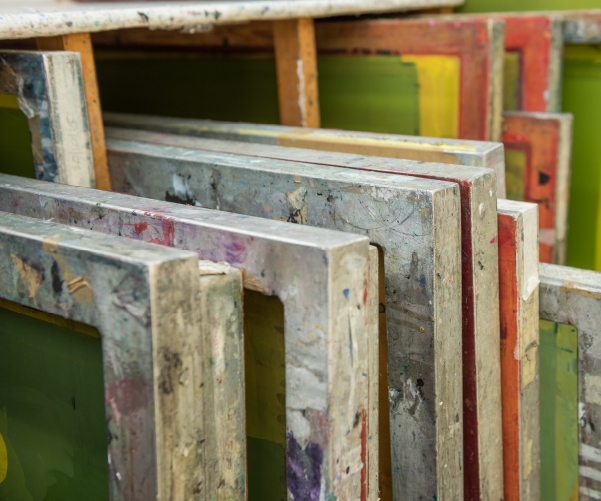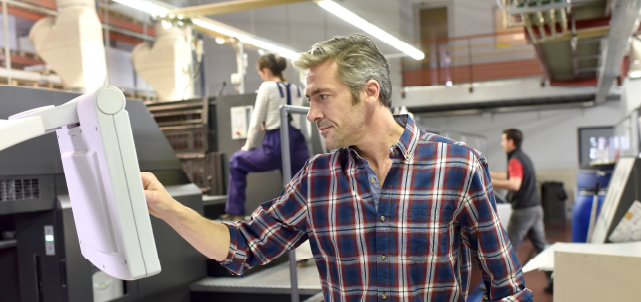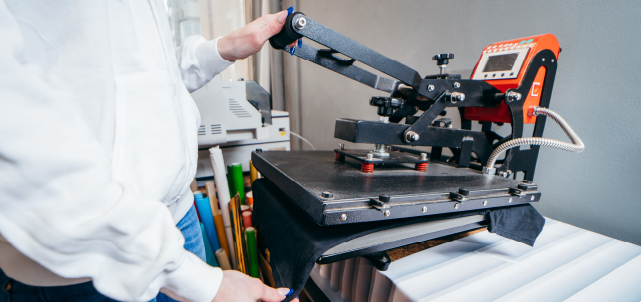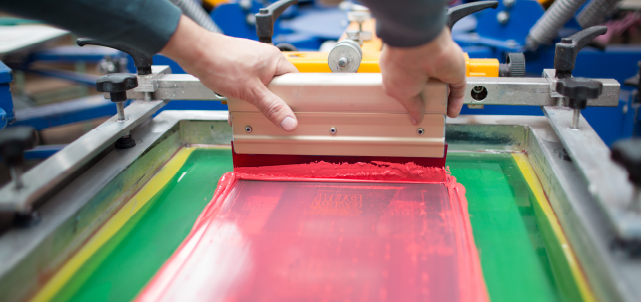Mesh count is one of the first items that screen printers need to understand to have successful results in production. Mesh count measures how many polyester threads cross each other per square inch of a screen. Different mesh counts are utilized for different applications, and using the wrong mesh count will create errors in printed products.
To help you further understand the importance of choosing the right mesh, our team put together the following information on what is needed to know about mesh count.

Common Mesh Counts
The following is a breakdown of common mesh counts and which inks and projects to use with them.
Low Mesh Counts
30 to 60 is most often utilized for high-density and glitter inks. The large particles within the ink need larger openings to pass through and onto the substrate.
80 to 86 is best used for metallic inks, alethic wear, and heavy inks. This mesh count is great for heavy ink deposits with high opacity. However, one should also use a thick underbase of materials like polyester to prevent ink bleeding.
Medium Mesh Counts
110 and 156 are great mesh counts to have on hand because they are useful in various applications. These screens are the best baseline to compare results since both can handle everything from block letters to spot-color designs. They are best used for higher-quality images because they have a good balance for ink deposits. An underbase is also recommended for the 156 mesh since, typically, only one pass will be needed.
196 is a great medium mesh count for when fine detail is needed, neck tags, and less ink deposit. This screen is also good for preventing thin inks from bleeding onto the substrate because the openings are small, allowing only tiny bits of ink to pass through.
High Mesh Counts
200 to 230 are for images with an extremely high level of detail and very thin inks because the tightly woven mesh count prevents ink from flooding garments. These mesh counts can also give plastisol inks a softer feel on materials, but the image will have a lower opacity.
305 and above mesh counts are typically at the top of the scale. Images with the highest level of detail, such as photorealism and fine halftone dots, need these mesh counts to expose properly. 305, 355, 380, and 400 are for graphic prints that utilize UV inks; signs, banners, and CDs are a few examples. The high mesh count gives printers control over regulating how much ink passes through the screen.
Why is Mesh Count Important?
For the best results when screen-printing products and production, it is imperative to use the correct mesh count. Here are some important factors to consider when choosing your mesh count.
Image detail is the first factor to consider when choosing your mesh count. Images with a high amount of detail will need a higher-count mesh screen to maintain detail because a low-mesh screen would allow the ink to bleed together and poorly capture the image.
However, a screen with a high mesh count will restrict the ink from getting on your substrate. This is especially true when considering your ink thickness. Thick inks, such as plastisol, need a lower mesh count to pass through the mesh and transfer the image onto a new material. Meanwhile, thin inks, like those that are water-based, need a high mesh count to avoid flooding and unwanted ink bleeding onto the substrate.
The type of garment on which you are printing is also an important factor when considering mesh count. Different materials absorb ink differently. For example, fleece absorbs more ink compared to minimally porous materials like paper, so fleece would need a mesh count of about 110, while paper would need something high like 200.
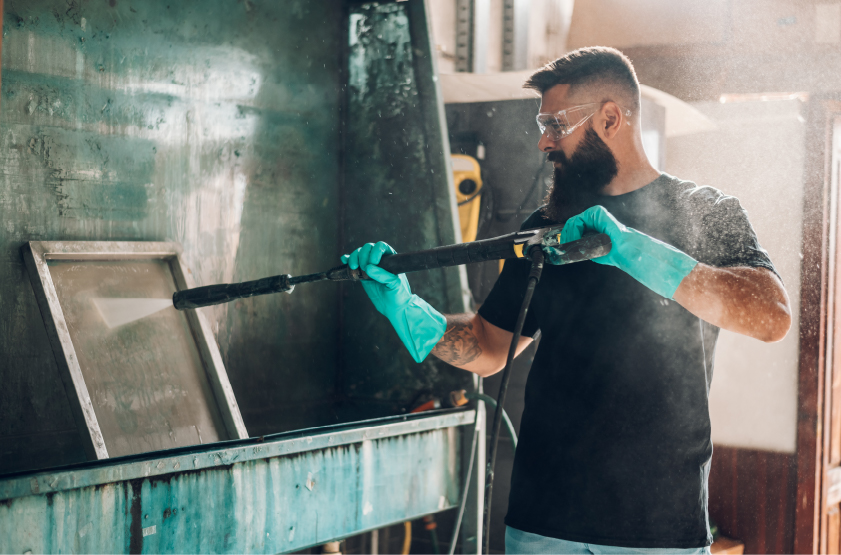
Results of Using the Wrong Mesh Count
Here are a couple of the results that will happen if you use the wrong mesh count is used.
Blurred images are the most common mistake that happens because of choosing the incorrect mesh count. You can lose a significant amount of detail if the screen’s mesh count doesn’t distribute the ink properly.
Poor ink deposit also greatly affects the quality of the image. Too high of a mesh count can result in ink not passing through, and too low of a mesh count means too much ink and potential “blown out” images.
Ruined garments can certainly result from one of the two reasons above, and while the ink might potentially be removed, much time will be wasted in the process. Time is money, too.
Screens drying too fast is another result of using the wrong mesh count. This outcome is more related to production than the screen print results, but it’s a mistake that often cannot be corrected. It happens because higher mesh counts have more surface area, meaning air can affect the mesh and easily take moisture out of it. The screen drying too fast means constantly hydrating the ink and cleaning the mesh when working with water-based inks.
General Guide to Choosing Mesh Count
| Mesh Count | Use For |
| 60-90 | Thick plastisol inks |
| 110 | Printing with white plastisol inks Do not use with water-based inks |
| 160 | Wife variety of ink types and substrate |
| 200-230 | Highly detailed artwork Great for water-based inks on wood and paper |
| 280-305 | Finely detailed artwork Half-tones CMYK process printing Solvent and water-based inks |
Improve Your Screen-Printing Production
There is no one correct screen-printing mesh count to use, and there is not much standardization across mesh count suppliers. The good news is that you can often get the same results with various mesh counts; it just takes a little experimentation.
EXILE Technologies can help your print shop increase its productivity with innovative pre-press solutions. Not only do we have various services and supplies for you, but we offer a range of thermal imagesetters, computer-to-screen printing systems, and exposure units. Shop now and consider making EXILE your preferred partner!
